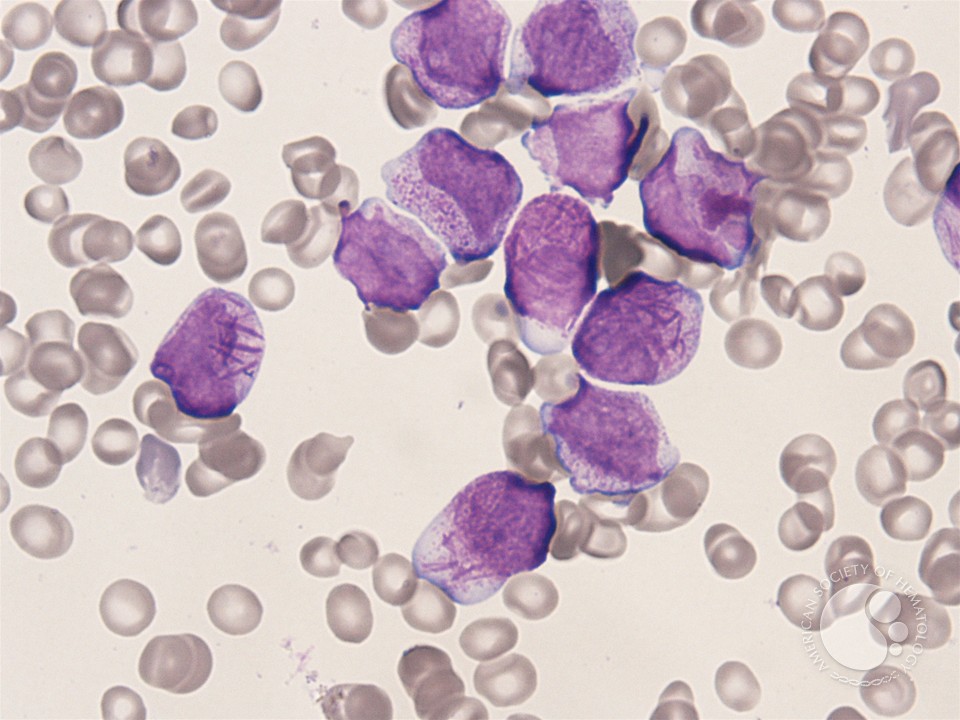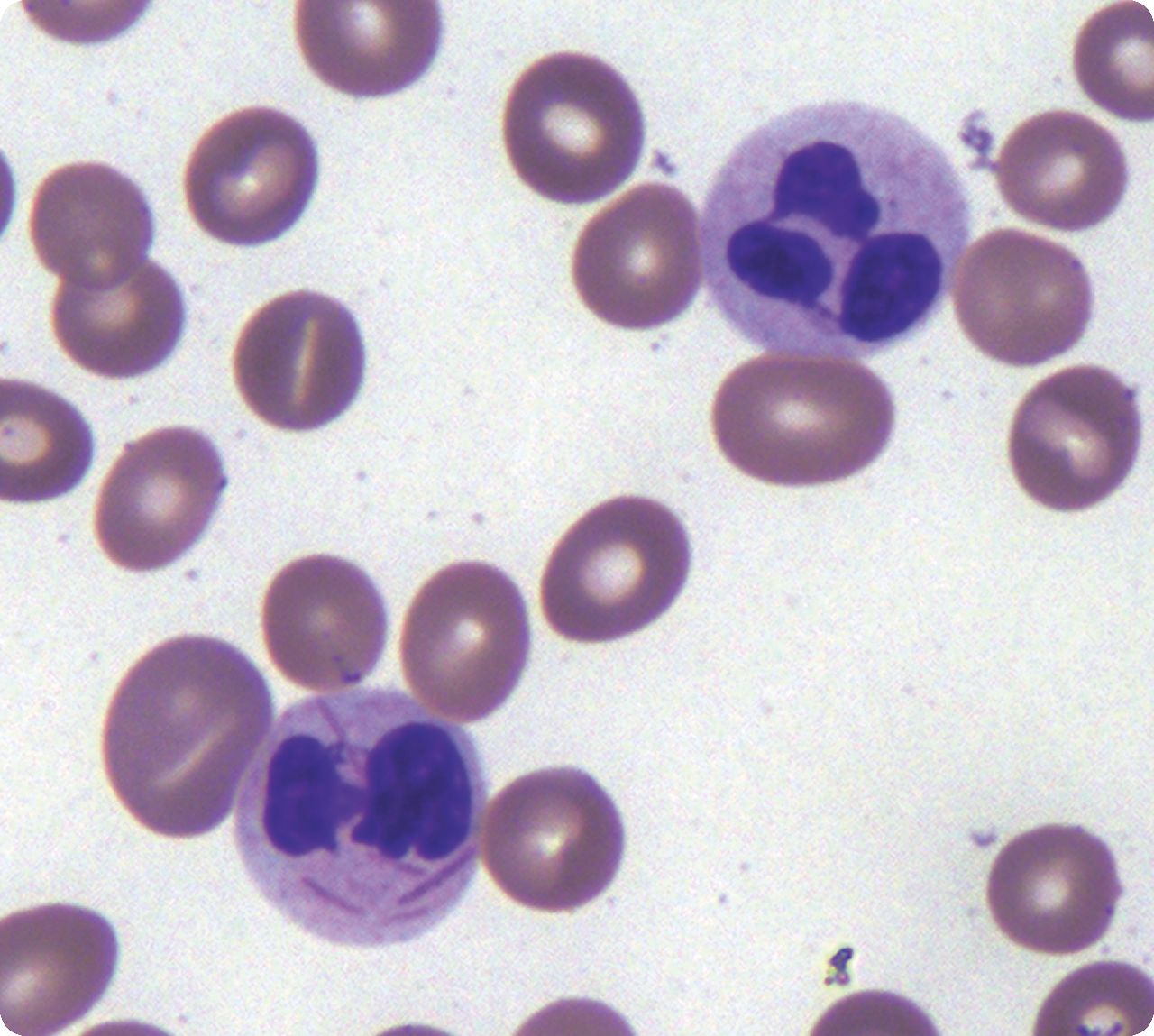Page Contents
OVERVIEW
This page is dedicated to organizing various examples of standardized exam questions whose answer is acute promyelocytic leukemia (APML). While this may seem a odd practice, it is useful to see multiple examples of how APML will be characterized on standardized exams (namely the boards and the shelf exams). This page is not meant to be used as a traditional question bank (as all of the answers will be the same), however seeing the classic “test” characterization for a disease is quite valuable.
KEY CHARACTERISTICS OF THIS CONDITION (ON EXAMS)
When it comes to standardized exams, each condition has its own “code” marked by key buzzwords, lab findings, clues, etc. If you are well versed in this code you will be able to more quickly identify the condition that is being discussed, and get the right answer on the exam you are taking. Below is the “code” for APML.
Chief Complaints:
- Fatigue/weakness
- Bleeding: from nose/gums is common
- Easy bruising
Clinical Workup:
- Blood smear can show many abnormal promyelocytes and Auer rods (azurophilic needle-shaped cytoplasmic granules).
- Fluorescent in situ hybridization (FISH) can reveal a translocation involving chromosomes 15 and 17.
QUESTION EXAMPLES
Question # 1
A 35 year old male comes to the clinic because he is suffering from progressive fatigue, bruises easily, and has had multiple episodes of bleeding from his gums during flossing. A physical exam reveals buses over his lower extremities. Lab tests are ordered and the results are below:
- Hemoglobin: 7.5 g/dL
- Platelets: 70,000/mm³
- Prothrombin time: 21 seconds
- Activated partial thromboplastin time: 54 seconds
- Plasma fibrinogen: 125 mg/dL (reference range 200-400 mg/dL
- D-dimer: 4.3 µg/dL (reference range < 0.5 µg/dL)
A bone marrow biopsy is conducted, and fluorescent in situ hybridization studies reveal the presence of a balanced translocation between chromosomes 15 and 17. What is the diagnosis in this patient?
Explanation # 1
Translocation of chromosomes 15 and 17 = APML
Question # 2
A 45 year old male comes to the hospital because he has been having recent episodes of fevers accompanied by sore throats. These symptoms have persisted despite him taking multiple courses of antibiotics. He complains of feeling weak and fatigued as well. He comments on the fact that he has begun to bruise easily, and has noticed that his gums have begun to bleed at times. Currently his temperature is 110.3°F, and the rest of his vitals are within normal limits. A physical exam is remarkable for mucosal pallor, an erythematous pharynx, and the presence of multiple bruises over his lower extremities. A peripheral blood smear is shown below:

What is the likely diagnosis in this patient?
Explanation # 2
Auer rods (seen on blood smear) = APML
Question # 3
A 40 year old male is hospitalized because he has a persistent fever and sore throat. He has a temperature of 101.2°F, his blood pressure is 125/75 mm Hg, heart rate is 95 ppm, and his respirations are 14/min. A physical exam demonstrates several bruises on his trunk and lower extremities. Blood appears to be oozing from his sites of venous access. A blood smear is performed and reveals the presence of many immature myeloid cells that contain needle-shaped granules in their cytoplasm. What is the likely diagnosis in this patient?
Explanation # 3
Immature myeloid cells (promyelocytes) + needle shaped granules in these cells (Auer rods) = APML
Question # 4
A 65 year old male comes to the clinic because he feels fatigue and has noticed that he bruises easily. He does not have any lymphadenopathy present on his physical exam. Labs are collected and reported below:
- Hemoglobin: 7.7 g/dL
- Platelets: 53,000/mm³
A blood smear is conducted and is shown below:

What is the likely diagnosis in this patient?
Explanation # 4
Auer rods (seen on blood smear) = APML
TESTABLE FACTS ABOUT THIS CONDITION (BEYOND ITS IDENTIFICATION)
Many questions on standardized exams go beyond simply recognizing the underlying condition. Often there are specific testable facts regarding some aspect of the disease’s pathophysiology/management/clinical implications that are commonly asked. Some of these are listed below:
Cause:
- Cause: 15;17 chromosomal translocation
- Genes involved: promyelocytic gene (PML) on chromo 15 and retnoic acid receptor (RARA) on chromosome 17.
- Fusion product: PML/RARA encodes a abnormal retnoic acid receptor that inhbitis myeloblast differentiation.
Treatment:
- All trans retinoic acid is used to induce differentiation of APL blasts (can induce remission).
- Arsenic trioxide can be used in combination to provide therapy.
Complications:
- Disseminated intravascular coagulation (DIC): can be a serious complication of APML
Other Facts:
- Classification: M3 variant of acute myelogenous leukemia (AML)
Page Updated: 04.15.2017